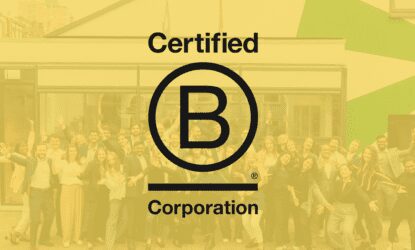 How Nexio Projects helps you master your EcoVadis assessment
How Nexio Projects helps you master your EcoVadis assessment
In the current business climate, organisations are increasingly expected and required to tackle some of the world’s greatest sustainability challenges. It has arguably never been more important to understand the topics and issues which are most important to those impacted by their business. In other words, their stakeholders.
Engaging with these stakeholders is also a key element within reporting frameworks such as the Global Reporting Initiative (GRI). It becomes even more important due to upcoming legislation such as the European Union Corporate Sustainability Reporting Directive (CSRD). With this in mind, organisations should be prioritising stakeholder engagement as a central pillar of ESG strategy development and refinement.
What is stakeholder engagement?
The AccountAbility Stakeholder Engagement standard defines stakeholder engagement as:
“The process used by an organisation to engage relevant stakeholders for a clear purpose to achieve agreed outcomes”.
Also noting that it is recognised as a key “accountability mechanism”.
Stakeholders can be considered as any individual or group who may be directly or indirectly impacted by a company’s activities.
GRI identifies two reporting standards that are directly linked to stakeholder engagement:
- Stakeholder inclusiveness: the reporting organisation shall identify its stakeholders, and explain how it has responded to their reasonable expectations and interests.
- Materiality: the report shall cover topics that reflect the organisation’s significant economic, environmental, and social impacts or substantively influence the assessments and decisions of stakeholders.
Why is it important, and what are the benefits?
Research has shown how stakeholder engagement can have a positive influence on a huge range of business activities:
- Value creation;
- Strategic planning;
- Decision-making;
- Innovation;
- Corporate social responsibility;
- Sustainability.
It is also a process that demonstrates transparency and accountability towards the people and groups that are impacted by the organisation. At the same time, it helps to mitigate any potential risks or conflicts.
Stakeholder engagement allows companies to broaden their outlook away from just their own business operations and outwards into their value chain. By integrating the concerns and ambitions of groups who sit within this chain, you can better understand how to collaborate on key sustainability topics. It also allows teams to identify the strong and weak points of their strategy. And then, of course, action these in the context of business risks and opportunities.
Stakeholder engagement is a vital element of materiality assessments. By gathering and balancing the different views, companies are able to identify the topics which are most material for their business.
The principles of double materiality will be a key requirement of the CSRD. Those who will be impacted by this (and similar) legislation should ensure that they are prepared. The process will become mandatory for tens of thousands of companies in the coming years.
You can read more about materiality assessments in our eBook and learn more about CSRD in our Factsheet, available here.
A practical roadmap for stakeholder engagement
Step 1: Identify and prioritise key stakeholder groups
Here are some questions you can ask to identify the key stakeholders for your organisation:
- Which external stakeholders do you deal with most regularly?
- On which stakeholders are your organisation most reliant for its operations?
- Which stakeholder thoughts, opinions and input have the greatest impact on your business?
These are the ones that should be targeted and will give the most valuable feedback.
The potential number and types of stakeholders are extremely large and can include both internal and external individuals or groups. Examples include, but are not limited to:
- Customers;
- Suppliers;
- Competitors;
- Partners;
- Industry associations;
- NGOs;
- Governments;
- Investors;
- Leadership;
- Employees;
- Functional leads (e.g. HR, Marketing, Operations);
- Local communities;
- Subcontractors;
- Media.
Organisations should identify a list of those groups which are most relevant to their business operations and value chain impact. Once identified, companies need to select a representative sample from each group.
Considering factors such as geography, size, business model, business relationship with the company and potential scale of impact.
Best practice would be to create a stakeholder map highlighting how and why each group significantly impacts the business. This input can also be used for the materiality matrix.
Step 2: Determine how to engage
There are multiple ways in which companies can choose to engage key groups, and indeed this can differ amongst groups. Common methods include:
- Surveys;
- Longer-form interviews;
- Focus groups;
- Employee town halls;
- Workshops.
Each of these can bring value to the stakeholder engagement process.
Wherever possible, companies can gain efficiency by integrating engagement into existing forms of communication.
- For employees, this could be via an existing satisfaction survey that is conducted on an annual or bi-annual basis.
- For customers, this could be incorporated into a regular interaction via a semi-structured interview.
- For leadership, the concept can be introduced and rolled out during a quarterly board meeting or similar venue.
It is important to consider the different contexts in which key stakeholder groups operate and tailor their approaches appropriately.
Step 3: Understand their perspective and key topics
The rationale behind engaging stakeholders is to understand different views on sustainability in your corporate thinking. Therefore, it’s important to give your primary stakeholders the space and capacity to provide input on the issues that matter to them.
Of course, this will likely differ significantly depending on the stakeholder. What is important to an employee may differ greatly from a supplier. Similarly, an NGO with a focus on a specific environmental or social issue may place greater emphasis on topics that are close to their heart.
Facilitating discussion, but also balancing and incorporating these views is important behaviour for organisations to exhibit. It’s a clear indicator that an organisation is serious about their commitment to sustainability.
Step 4: Communicate outcomes and integrate them into your corporate strategy
Transparency and accountability are also characteristics which make organisations stand out when it comes to sustainability. To exhibit these, sustainability teams must be able to understand the outcomes of their engagement. They should consolidate and prioritise results so that they can create a coherent message.
If sufficient data is gathered from a diverse group of stakeholders, patterns and trends should emerge. The assessment gives insight into material topics and issues which are considered important by a variety of respondents.
Organisations can combine and cluster results into key groups and then align these with existing strategic priorities to see if there is alignment. If not, this process allows companies to identify and prioritise the ESG issues they should focus on in the coming years.
Do’s & don’ts of stakeholder engagement
Do’s
- Be inclusive
- Identify diverse and representative groups of stakeholders
- Tailor engagement approaches for different groups
- Understand different contexts
- Integrate outcomes into your sustainability strategy
- Communicate results in the annual report or a dedicated sustainability report
Don’ts
- Be narrow
- Follow prescriptive pattern
- Push your own agenda onto different stakeholders
- Keep approach uniform for each group
- Ignore or de-prioritise outcomes
- Keep results hidden











